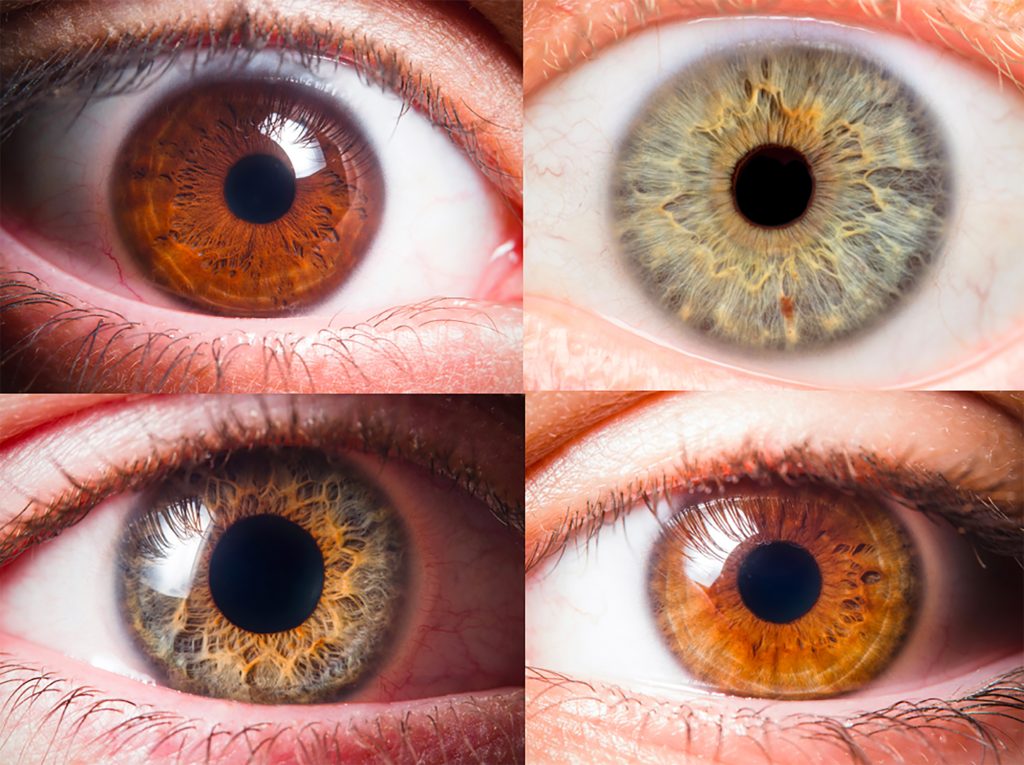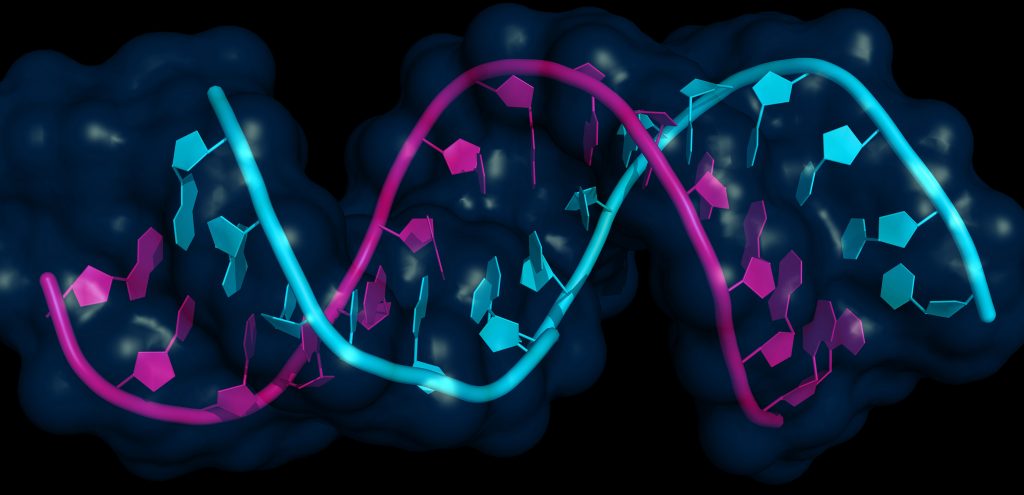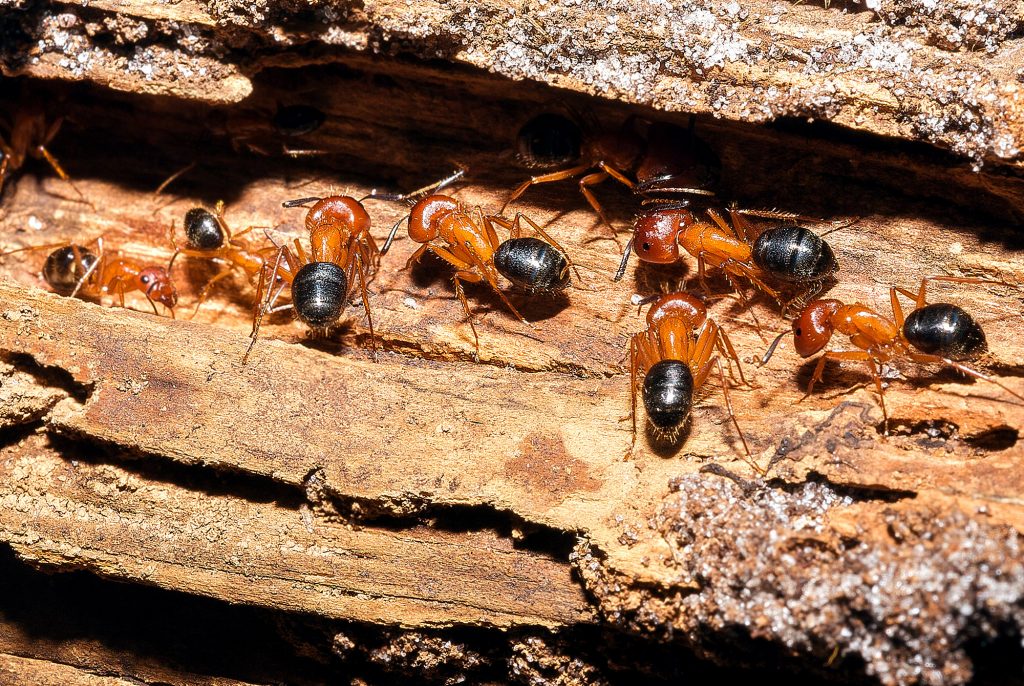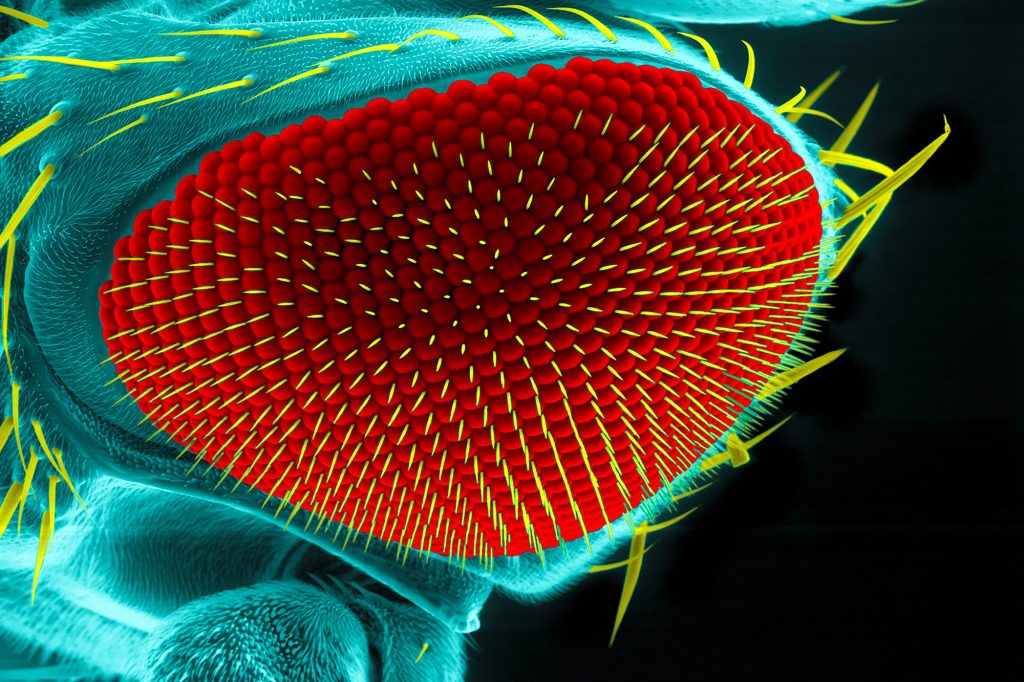
Epigenetics More than just DNA


Epigenetics Objectives
-
Describe what epigenetics is and how environmental factors can impact DNA expression.
-
List the steps of reproductive cloning and provide examples of animals that have been cloned.
-
Diagram basic eye structure and note significant evolutionary changes over time.

Iris color in human eyes is complex. Multiple genes impact production of different forms of melanin pigment. However, even taking multiple genes and their various allele versions into account, something else seems to be impacting the pattern and variation of pigments in the iris. Researchers wonder; could this be an example of epigenetics in action?
Epigenetics generally refers to molecules attaching to DNA and altering how it expresses. The paradigm shift from the widely accepted theory that only the bases of A-T-C-G in DNA determine inheritance to the epigenetic idea that chemicals piggy-backing on the DNA are inherited as well is re-writing genetics.


In some carpenter ant species, worker ants and the queen can be genetically identical, but have different shapes, sizes, and behaviors. Epigenetic factors, including DNA methylation (adding carbon and hydrogen to DNA) and histone modification may alter gene expression.
If you take the eggs of mutant Drosophila melanogaster with white eyes and briefly heat the eggs, the adults will have red eyes instead of white eyes. O.K., that could be something to do with the heat impacting protein synthesis, but then it gets weird…
If these flies are again crossed, the following generations have mostly white eyes, but also some red eyes, even though the alleles of DNA passed on are all white eye recessive sequences. This suggests that something more than DNA is impacting phenotypes.

The potential impact of chemicals attaching to DNA will have to be taken into account when trying new genetic technologies, including cloning.
Epigenetics and Cloning
A concern with reproductive cloning is that chemical “bookmarks” may not be scrubbed from the donor chromosomes sufficiently; leading to premature aging of cloned offspring.
This video introduces the basics of reproductive cloning.

Cloning is advancing and in some cases the benefits may outweigh the risks. Meet the first clone of a North American endangered species: Elizabeth Ann the Black-Footed Ferret, produced in 2020, a clone of an individual ferret that died in 1985 with no surviving offspring. You can read about the amazing story here.
In 1985 the entire species of Black-Footed Ferrets consisted of only 18 animals, and only seven of those have successfully produced offspring through captive breeding. As a result, the 1000 Black-Footed Ferrets on earth today are all close genetic relatives. Cloning of non-breeding individuals may give the species the variation needed to survive into the future.
And cloning, may not stop here, one of the labs involved in this cloning process also has DNA from extinct species, including the Passenger Pigeon and Wooly Mammoth. “De-extinction” relies on advancements in cloning procedures.

Eye Structures

Eyes are critical in collecting information that can assist animals in finding food, locating mates, evading predators, determining location, and time of day.
Animal eyes vary significantly, and visual abilities relate to the number, quality, and arrangement of light-sensitive cells.


Most invertebrates have light sensitive cells that can sense ambient light and directionality of a light source.
Most vertebrates and some mollusks contain light-sensitive cells within a protective retina, often with structures that focus light to produce crisp images.
Humans share basic eye structure with many other vertebrates. This video provides information on human eye structures and how they relate to vision.
Eye structures relate to function.

These cave tetras (Anoptichthys jordani) no longer have eyes in their eye sockets. In environments where vision is no longer necessary, like caves, some animal species lose visual function over many generations as mutations accumulate.
These two sibling guinea pigs have different eye colors: red and black. The lack of melanin pigment in the red-eyed guinea pig increases the light that reaches the retina. In some species, this leads to higher mutational damage of retinal cells when exposed to high light.
Small cats species have a characteristic slit-like pupil that closes very narrowly, improving depth of field to catch prey and reducing the amount of light that could damage the retina. Big cats have pupils that contract to a round point instead.

At night in the field if you see reflective eyes staring back at you, it is likely a vertebrate with tapetum lucidum, a tissue that reflects light and enables animals to see in dim light. This is more common in nocturnal animals, so humans lack this eye structure. When light reflects off mineral crystals in the the tapetum lucidum it is called “eyeshine.” Cats, dogs, and raccoons have green eyeshine; coyote, rodents, opossums, and birds have red eyeshine, and many other mammals like horses have blue eyeshine. Some fish species have white eyeshine.
Next we will explore the most publicized of genetic technologies: gene editing and the creation of genetically engineered organisms.

Check your knowledge. Can you:
-
describe what epigenetics is and how environmental factors can impact DNA expression?
-
list the steps of reproductive cloning and provide examples of animals that have been cloned?
-
diagram basic eye structure and note significant evolutionary changes over time?




